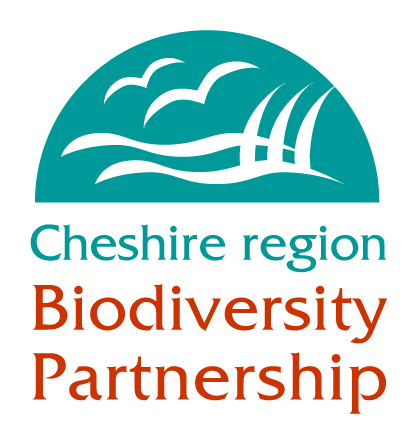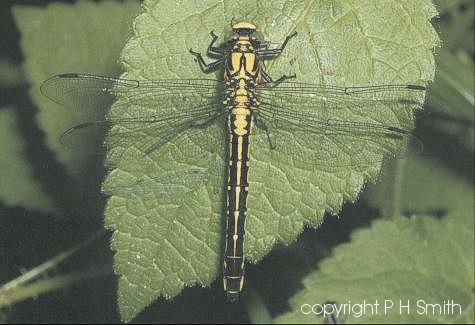
WELCOME TO CHESHIRE BIODIVERSITY
PART OF THE CHESHIRE REGION BIODIVERSITY PARTNERSHIP
 |
WELCOME TO CHESHIRE BIODIVERSITY
|
|
 Links to associated HAPs
Links to associated HAPs None
This dragonfly is described as nationally scarce, it is extremely local but can occur in large populations when the habitat is suitable. Strong populations are known to exist on the rivers Severn, Wye and Thames. In Cheshire club-tailed dragonfly occurs on the stretch of the River Dee between Shocklach and Aldford. The short flight period of the dragonfly restricts surveying opportunities to the last week in May and first two weeks in June. The River Gowy, which flows within 5km of the Dee, could possibly provide further suitable breeding habitat for the dragonfly, although regular dredging of the river channel may pose problems.
The club-tailed dragonfly is a medium-sized yellow/green and black dragonfly with a noticeably club-shaped tail. It favours slow flowing rivers with silt deposits for the larvae and adjacent tree cover for the adults. The larvae may take up to five years to mature with emergence occurring in late May early June.
OBJECTIVES |
LOCAL TARGETS |
To maintain the current populations of club-tailed dragonfly in the Cheshire region by preventing actions likely to damage suitable breeding sites and increasing awareness of the ecological requirements for the species with land managers / owners |
1. To provide an accurate measure of population size in the Cheshire region by 2003. 2. To improve our knowledge and understanding of the species through research and detailed survey. |
ACTIONS REQUIRED |
|
|
|
| 1997 - 2006 Action Completed |
|
Cheshire Dragonflies and Damselflies website - http://www.brocross.com/dfly/dfly.htm
British Dragonfly Society - www.dragonflysoc.org.uk/
| LBAP Chair | Paul Hill, Lepidoptera & Odonata LBAP Action Group Phone: 0871 734 0111 |
HMSO (1995): Biodiversity: The UK Steering Group Report, Volume 2: Action Plans, London.
HMSO (1995): Biodiversity: The UK Steering Group Report, Volume 1: Meeting the Rio Challenge, London.
|